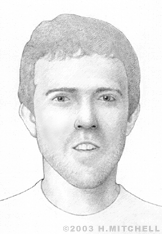Saul Griffith
Sydney, Australia native Saul Griffith has created technology that will simplify the method for producing eyeglass lenses. This, he hopes, will eventually allow those around the world who could previously not afford eyeglasses to obtain them via the low cost and improved availability this technology will provide.
Griffith studied Metallurgical Engineering at the University of New South Wales, then traveled to the University of California, Berkeley, where he studied materials science. After receiving his bachelor’s degree, he pursued a master’s degree in mechanical engineering in Composite Materials Processing at the University of Sydney. He then attended the Massachusetts Institute of Technology (MIT), where he received his Master of Science in Media Arts and Sciences.
Griffith received his PhD in nanotechnology, also at MIT, in 2004. As part of his research, Griffith began working on a project that was based on his belief that it was possible to create a simple eyeglass manufacturing system that could allow local vendors to produce them inexpensively so that the one billion people in the developing world could feasibly obtain them. Griffith’s compact, portable machine includes a single mold with an easily changeable shape, able to form an acrylic lens in the exact shape prescribed by an optometrist. He made the initial prototype with basic materials that he found around the house, using a mold that changes shape when baby oil is injected from a syringe into a small rubber tube attached to the mold. This idea then formed the idea for Optiopia, Inc., which he co-founded in 2007.
Griffith co-founded 9 companies between 2004 and 2008: HowToons, LLC, SQUID Labs, LLC, Instructables, LLC, Potenco, Makani Power; Optiopia, Inc., Wattzon, MonkeyLetric, and OtherLab.
He plays the role of Chief Scientist for Wattzon, which develops personal energy audits in the form of a cellular application to allow people to understand their energy consumption. He is also Chief Scientist for Makani Power, which aims to “rethink wind power” by using kites that generate more energy at a lower cost than current wind systems. He invents for SQUID Labs, which develops new technology to solve a wide variety of problems. OtherLab, a company whose motto is “Wouldn’t it be cool if…,” is his best known startup. From this company, he has created many spin-offs, including his current project, OnyaCycles, which produces all kinds of bikes, including a leaning cargo tricycle.
Griffith was inducted into the National Inventors Hall of Fame and also won the Collegiate Inventors Competition in 2001. Also in 2001, he and colleague Neil Houghton won the Harvard Business School business plan contest for their proposed company, Low Cost Eyeglasses (Optiopia, Inc.). In 2004, Griffith was awarded the $30,000 Lemelson-MIT Student Prize for his invention. He was featured in TIME Magazine’s “Top inventions of 2005”. In 2006, SQUID Labs and Instructables, LLC won the WIRED “Rave” Award for Industrial Design. He was granted the MacArther Foundation’s “Genius Grant” in 2007.


